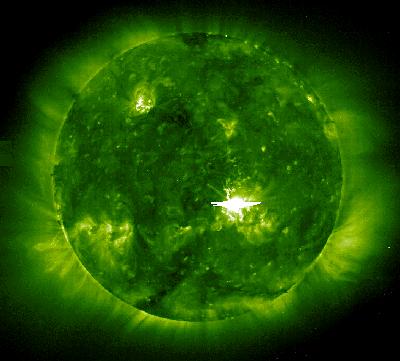Key Takeaways:
The Royal Observatory, Greenwich (ROG), in partnership with the Science and Technology Facilities Council’s Rutherford Appleton Laboratory and Zooniverse are launching Solar Stormwatch, a new web project where anyone can help spot and track solar storms and be involved in the latest solar research.
The Sun is more dynamic than it appears in our sky. Intense magnetic fields churn and pummel the Sun’s atmosphere, and they store enormous amounts of energy that, when released, hurl billions of tons of material out into space in explosions called Coronal Mass Ejections (CMEs) — or solar storms.
Solar Stormwatch volunteers can spot these storms and track their progress across space towards Earth. Such storms can be harmful to astronauts in orbit and have the potential to knock out communication satellites, disrupt mobile phone networks, and damage power lines. With the public’s help, Solar Stormwatch will allow solar scientists to better understand these potentially dangerous storms and help to forecast their arrival time at Earth.
“The fact that any Solar Stormwatch volunteer could make a brand new discovery about our neighboring star is very cool indeed,” said Julia Wilkinson, a Solar Stormwatch user. “All you need is a computer and an interest in finding out more about what the Sun is really like.”
“The more people who can take part in Solar Stormwatch, the more we will know about solar storms,” said Chris Davis, one of the STFC scientists behind Solar Stormwatch. “Collective measurements by many people are worth much more than the subjective opinion of one person.”
The project uses real data from NASA’s STEREO spacecraft, a pair of satellites in orbit around the Sun that gives scientists a constant eye on the ever-changing solar surface. The United Kingdom has a major input in STEREO, providing the two widest-field instruments, the Heliospheric Imagers, which provide Solar Stormwatch with its data. Each imager has two cameras helping STEREO stare across the 93 million miles (150 million kilometers) from Earth to the Sun.
Solar Stormwatch is the latest chapter in a long history of solar research at the Royal Observatory, Greenwich, dating back to the 1870’s when the observatory housed a photoheliograph, a telescope that took daily photos of the Sun to track sunspots. Visitors will be able to see this telescope again when the Altazimuth Pavilion at the Royal Observatory, Greenwich, reopens in March 2010.










